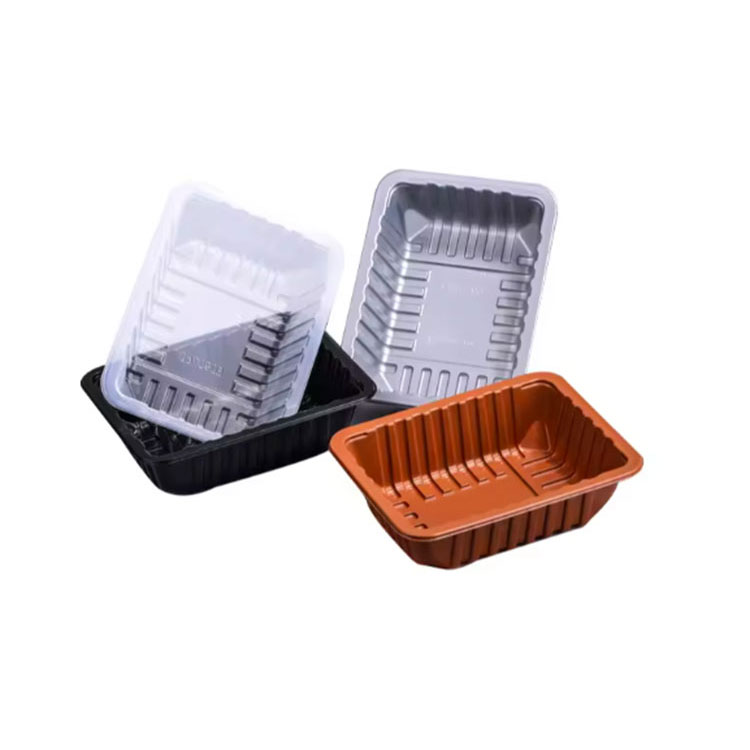How Are Food Packaging Boxes Evolving to Meet Consumer Demands for Convenience, Sustainability, and Safety?
2025-02-26
Food packaging is a critical part of the food industry, serving not only to preserve and protect the products but also to enhance their appeal and ensure their safety. Among the various types of packaging available, food packaging boxes have gained significant popularity for their versatility, functionality, and ability to cater to the modern demands of both businesses and consumers. But how are food packaging boxes evolving to meet the growing demands for convenience, sustainability, and safety? Let's explore the developments in food packaging and the driving factors behind these changes.
Why Are Food Packaging Boxes So Important in the Food Industry?
Food packaging boxes play an essential role in the food supply chain. Their primary function is to protect food products during transportation, handling, and storage. Whether they are used for fresh produce, frozen foods, takeout meals, or packaged snacks, food packaging boxes ensure that the food reaches the consumer in the best possible condition.
In addition to preserving the quality of the food, packaging boxes also serve as a key marketing tool. A well-designed box can attract consumers, build brand identity, and communicate important information, such as nutritional content, cooking instructions, or ingredient lists. Beyond the practical and promotional roles, food packaging boxes are now being designed with sustainability in mind, as consumers become more aware of the environmental impact of packaging waste.
How Are Food Packaging Boxes Evolving to Meet Modern Consumer Expectations?
1. Sustainability and Eco-Friendly Packaging
As concerns about environmental sustainability grow, consumers are increasingly seeking products that minimize their environmental footprint. This has led to a shift in the food packaging industry, where manufacturers are exploring ways to create more eco-friendly food packaging boxes.
Many companies are opting for materials such as recycled paper, biodegradable plastics, and plant-based materials that reduce the reliance on conventional plastic packaging. For instance, food packaging boxes made from cardboard or corrugated fiberboard are popular choices because they are lightweight, recyclable, and made from renewable resources. Some companies are even incorporating water-based inks or soy-based adhesives to further reduce the environmental impact.
Additionally, innovations such as compostable food packaging and edible packaging are gaining traction. These advancements not only reduce waste but also promote a circular economy where packaging can be reused or disposed of responsibly.
2. Convenience and On-the-Go Options
In today’s fast-paced world, consumers increasingly prioritize convenience, and packaging is no exception. Takeout meals, ready-to-eat snacks, and pre-portioned meals are all growing in popularity, and food packaging boxes are evolving to cater to this demand for easy-to-use, on-the-go solutions.
Food packaging boxes are being designed for ease of use, with features like resealable lids, built-in compartments for sauces or condiments, and handles for portability. For example, microwaveable food packaging boxes with clear windows allow consumers to heat their meals without having to remove the food from the packaging. These innovations not only improve consumer convenience but also enhance the overall user experience.
Moreover, the size and shape of packaging boxes are becoming more diverse to cater to different types of food products, from small snack packs to larger family-size portions. Customizable packaging options also make it easier for brands to offer tailored solutions that suit a variety of consumer preferences.
3. Food Safety and Preservation
Ensuring food safety and preservation is one of the most critical functions of food packaging boxes. Packaging must protect food from contamination, spoilage, and damage while also maintaining its freshness, flavor, and nutritional value.
One of the major developments in food packaging is the use of modified atmosphere packaging (MAP), which involves adjusting the levels of gases inside the packaging to extend shelf life. This technology is particularly beneficial for fresh produce, meats, and dairy products, as it helps slow down the natural decay process, preserving the food for longer periods.
Additionally, food packaging boxes are now incorporating features like moisture-resistant coatings and vacuum-sealing to prevent oxidation and maintain food quality. These technologies are especially important for perishable goods that require consistent storage conditions to ensure freshness.
4. Innovative Designs and Customization
The aesthetics of food packaging have always been important, but in the age of social media and e-commerce, packaging design has taken on a more prominent role. Food packaging boxes are now being designed with more attention to visual appeal, focusing on vibrant colors, eye-catching graphics, and sustainable packaging solutions that reflect the brand’s values.
Brands are also increasingly embracing customization in packaging design. Personalized food packaging boxes that feature the brand logo, product information, or seasonal designs are helping companies stand out in a competitive market. In addition, interactive packaging that allows customers to scan QR codes for recipes, promotions, or product information is becoming more common.
What Are the Benefits of Using Food Packaging Boxes?
1. Enhanced Brand Visibility
Food packaging boxes offer an excellent platform for branding and marketing. A well-designed box can attract consumer attention on store shelves, encourage impulse buys, and create a memorable experience. Since food packaging is often the first point of contact between the consumer and the product, the right design can significantly impact purchasing decisions.
2. Protection and Preservation
The main function of food packaging boxes is to protect the contents and ensure food safety. Whether it’s preventing moisture, air, or light from affecting the food, or providing insulation to maintain temperature, packaging boxes help extend the shelf life and preserve the quality of the food. This is especially crucial for perishable and sensitive items like fruits, vegetables, and frozen foods.
3. Cost-Effective and Lightweight
Food packaging boxes, particularly those made from cardboard or paperboard, are cost-effective and lightweight, making them an attractive option for manufacturers looking to reduce shipping and production costs. The ease of stacking and storing these boxes also saves space and improves logistical efficiency.
4. Environmental Benefits
With the growing emphasis on sustainability, food packaging boxes made from recyclable or biodegradable materials offer environmental benefits. Many packaging suppliers are now offering solutions that are not only functional but also eco-friendly, ensuring that companies can reduce their carbon footprint while meeting consumer demand for sustainable products.
The Future of Food Packaging Boxes
As the demand for more sustainable, convenient, and innovative packaging solutions continues to grow, the food packaging industry is expected to see further advancements. The development of smart packaging that includes features like temperature sensors, freshness indicators, and tamper-proof seals will likely become more common in food packaging boxes. These innovations will continue to improve the consumer experience and provide more reliable solutions for food safety and preservation.
Conclusion
Food packaging boxes are evolving to meet the changing demands of the food industry. With a focus on sustainability, convenience, food safety, and innovation, these boxes are becoming more than just protective containers. They are essential tools for brand marketing, environmental responsibility, and improving the overall consumer experience. As consumer preferences continue to evolve, the future of food packaging boxes looks promising, with endless opportunities for customization, technology integration, and eco-friendly solutions.



